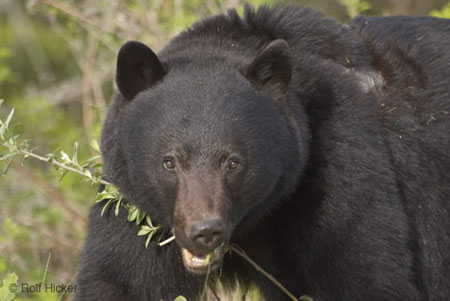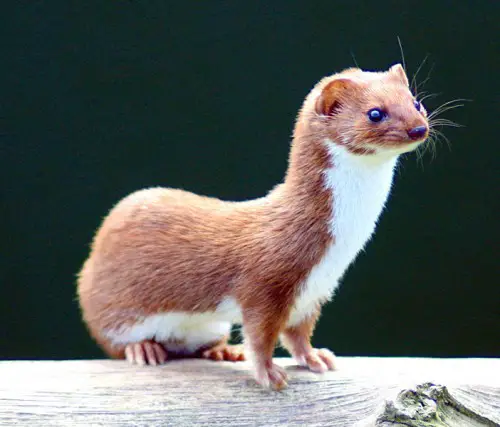Black Bear
Found all across the northeastern and western United States as well as most of Canada, the black bear has expanded its range in recent years.
They live primarily in heavily wooded areas and mountainous ranges, and are able to climb trees readily by wrapping their front legs around the trunk of the tree and grabbing it with their impressive claws. The Black Bear is one of the smallest bears in North America.

Black Bear
The term black bear is a misnomer in that many Black Bears are not black, but instead a very deep brown or brownish red. They have very sharp claws and a short stubby tail.
The male Black Bear grows to as much as 6.5 feet in length, and can measure more than three feet at the shoulder when walking on all fours, while the female, a bit smaller in stature can weigh as much as 300 pounds.
Food and Habits
Bears are what is called omnivorous, eating carrion, vegetation, grubs and berries as well as meat.
Very often they become nuisance animals when they come too near to civilization and eat from trash cans, or steal foodstuffs from campsites. They have often broken into camps to take what is there as well Bears are among the animals which hibernate, although theirs is not a true hibernation, in that they will sleep during the winter but do emerge from their den on warm days.
During winter they will look for a spot to den under a hollow log, in inside a fallen tree, or a vacant cave.
Prior to denning they will eat a great deal to provide themselves with a layer of fat to both insulate and feed them during the winter.
It is also during the denning process of winter that the mother bear, called a sow, will have her young.
She lines the den with grass and leaves, and will give birth usually to two or three cubs. The newborn cubs are tiny and completely hairless when born and weigh less than a pound, and must exist completely dependent upon the mothers milk for the first few months.
Black Bears come out of their dens in spring extremely ravenous and immediately search for food items.
By the time the mother bear emerges from the den the cubs have already become furred, and are ready to follow the mother on foraging expeditions.
Bears are extremely protective of the cubs and although they are not by nature aggressive, they will become so if you blunder upon a mother with her young..
A cub will stay with its mother for about a year, prior to leaving the den to go out on its own.
FOOD
- spend most of their time looking for food
- eat plants – twigs, buds, leaves, nuts, roots, fruit, berries, plant shoots
- also eat ants, honey, fish
- use sharp claws to tear bark from trees and to rip open rotten logs to look for insects and grubs
- climb trees for birds’ eggs and to get to beehives
- sometimes eat small mammals
- catch fish with paws or teeth
- stand up on hind legs to smell
Find out more about the Black Bear over at Wikipedia »


I love black bears.
i one time have seen a female black bear with its cub in yosemeti national park. our guide allowed us to get out of the car and take photos. it was an amazing expirience. she wasnt doing anything so we where not in danger at all.but i still think its not totally undangerous to do such a thing. tough i m happy that their are places where these animals are protected, can spread out and dont get in conflict with human like it is the case so often out of national parks.